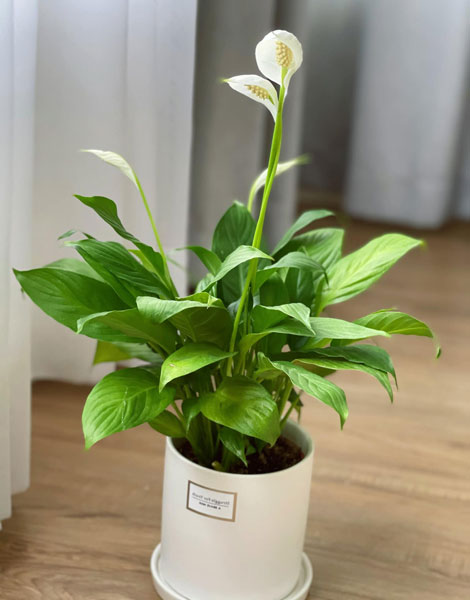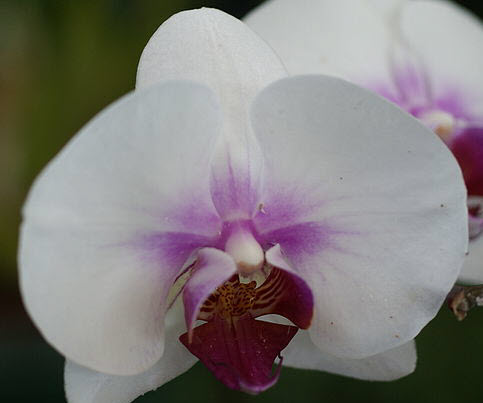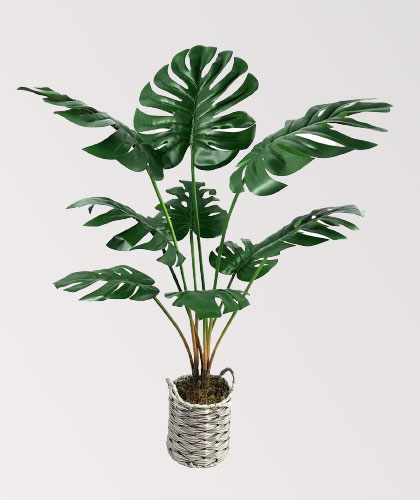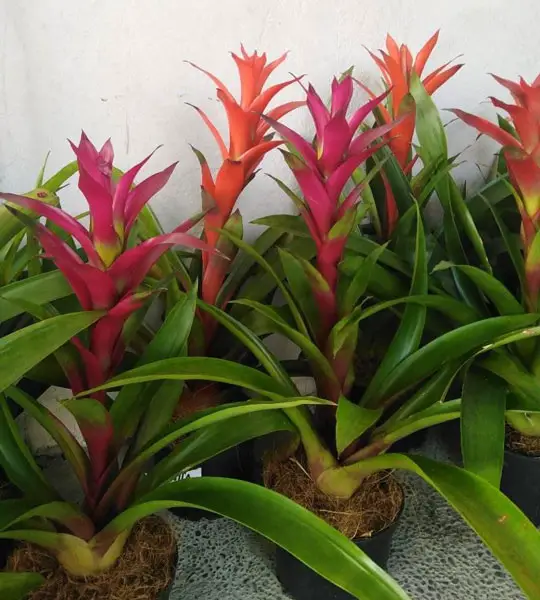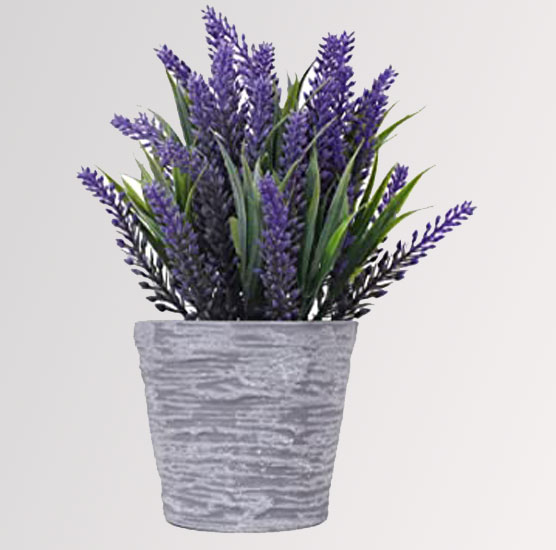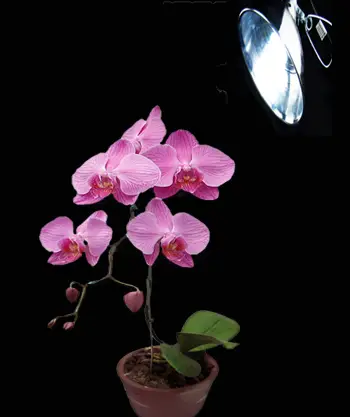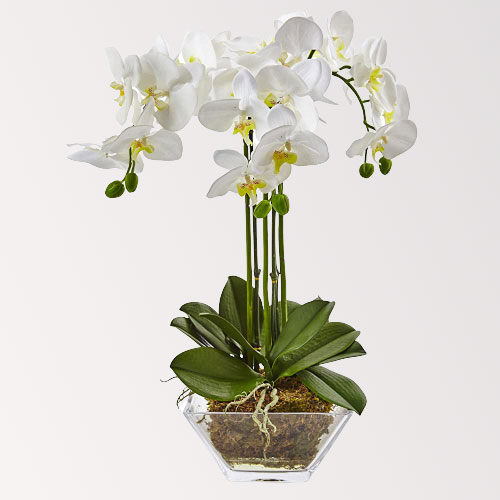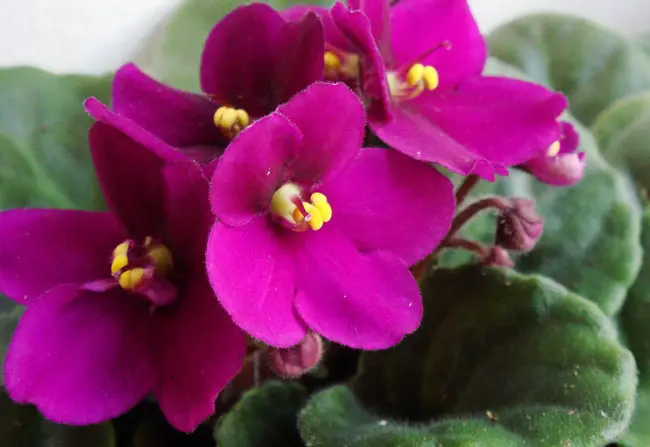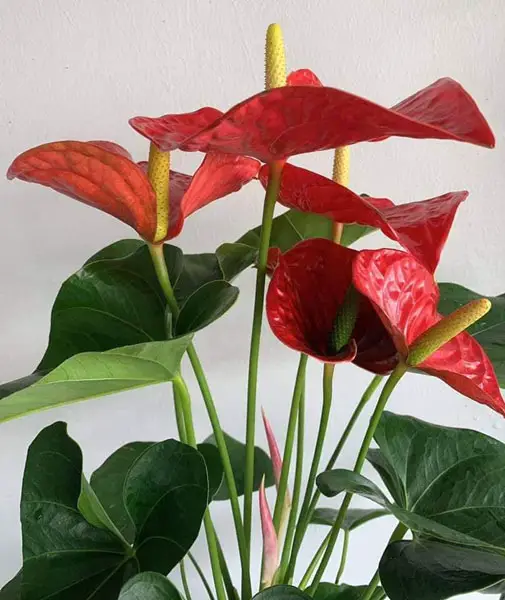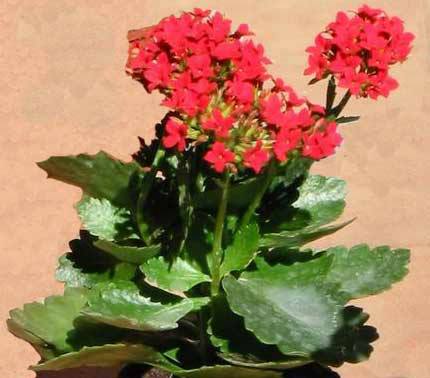Indoor flowers can not only improve the appearance of your home, but they can help reduce your stress and ensure the air in your house remains clean as well. They’ve even been shown to boost mood and productivity when they’re around. With all the benefits these plants can bring, you’ve got to wonder what the best flowers to plant inside are?
If you’re looking for the perfect indoor flower for you, you’ve come to the right place. The following sections will discuss what kinds of flowers thrive in low lighting, the types of imitation flowers that look the most alive, and the best flowers for a small space. So get ready to liven up your living room, office, or really anywhere inside that could use a little decoration.
Best Flowers for Indoors Low Light
Many people assume they can’t have any real indoor plants because the lighting in their house or workspace is relatively low. Fortunately, this isn’t true, and many types of flowers can, in fact, be planted in low lighting and even thrive there.
Each of the following flowers will flourish in low lighting and bring a sense of style and serenity to any home:
Peace Lily (Spathiphyllum wallisii)
With its calming white petals and incredible ability to adapt to different lighting situations, the peace lily is a great flower to grow indoors. Its look has been described as anything from a spoon shape to a white flag. Meanwhile, its scent is light and modest–perfect for anyone who doesn’t want something too intrusive.
Indigenous to Colombia and Venezuela, the peace lily began its journey worldwide in 1870 through trade with Europe. It continues to be one of the most highly recommended flowers for indoor growth because of its low level of maintenance and its ability to blend into nearly any setting.
These flowers can easily grow in a normal indoor potting mix when the soil is damp but not soaked. However, if you want to have all of your bases covered, peace lily-specific fertilizer is available from various retailers.
If you’re going to care for a peace lily, the following suggestions will help ensure it stays happy and healthy in your home:
- They still need sufficient light to thrive: It’s a good idea to place your peace lily somewhere near a window, as the light they receive from the sun will be more effective than that from synthetic lighting. They don’t need to be directly in front of the window or the window sill.
- Too much light can be detrimental: If you notice that your peace lilies leaves are turning brown and curling up, this is a sign that it is receiving too much direct light. If it’s in front of a window, you could consider moving it out of the sun’s direct path or putting up curtains to diffuse that light a little bit.
- Peace lilies need to be watered weekly: While they don’t require as much watering as other plants, they require some. If your peace lily is becoming dehydrated, its leaves will begin to droop. However, you can avoid this problem altogether with weekly watering and a little spritzing in the hot season.
Moth Orchids (Phalaenopsis Orchids)
Phalaenopsis Orchids are not only great because of their beautiful variety of colors and thick leaves but because of how easy they are to care for if you’re a beginner. They require little maintenance, can exist in low lighting, and bloom for long periods of time.
You can find phalaenopsis orchids with colors ranging from pink and white to yellow and lavender. These colorful flowers are native to Australia, New Guinea, and the Philippines, though now they are sold worldwide.
For at-home purposes, phalaenopsis orchids will grow best in a potting mix specifically designed for them. Fortunately, these potting mixes are readily available online and in many home and garden stores.
If you decided to try out growing phalaenopsis orchids in your home or workplace, the following tips would help you achieve optimal results:
- Where you keep them determines their lighting needs: The heaviest light generally comes from windows on the south side of your house. Phalaenopsis orchids will wither if they’re given too much light. Therefore, if you keep them near a window that receives a lot of light, consider putting up a thin curtain to diffuse it a little bit.
- Rotating their position will help them grow evenly: While you don’t have to rotate them every day, making sure to do it once a week can help ensure more even growth. It will also ensure that they receive the proper amount of sun to stay fully nourished and healthy.
- Your soil should be nearly dry before you water your orchid: In the average indoor climate, you should water phalaenopsis orchids every one to two weeks. However, another good rule of thumb is to wait for the soil to be dry or close to dry, depending on the temperature.
Swiss Cheese Plants (Monstera Adansonii)
While it can take a while for a swiss cheese plant to flower, their unique, offbeat look makes them attractive to many people. Their leaves slowly develop holes as they grow. When they finally do flower, they have large thick white blooms that somewhat resemble the peace lily even though the rest of the plant does not.
Originating in Mexico and Colombia, Swiss Cheese Plants have grown popular as indoor house plants because of their flexibility in living conditions. They don’t require direct light and can grow to many lengths, making them desirable to many people worldwide.
Swiss cheese plants need their soil to retain a certain amount of water. Unlike many other plants on this list, you should never wait till they dry to water them. Instead, please put them in a peat-based potting mix to keep water and ensure the soil stays moist.
- They do best near a window but not directly in the light: In the wild, these plants grow under the shade of enormous trees. However, they also grow in areas that receive a lot of sun. It’s, therefore, best practice to put them near a window but out of the direct path of the sun. They can get the energy they need without being overloaded.
- They love to climb and can grow tall: It’s a good idea to eventually introduce some support, like a wooden rod, to let them grow upward. Just be prepared to have a really tall plant in your house one day, as these can grow between 6 and 8 feet tall.
- If you have pets, please note that swiss cheese plants can be toxic: You may want to put them in a room where your pet cannot reach, as these plants could cause serious illness if ingested. If you have cats, this risk is higher, as they often like to munch on flowers and leaves.
Guzmania Bromeliads
Guzmania Bromeliads come in various tropical colors, including; white, orange, yellow, purple, and red. They’re a great way to bring a splash of color into a room that normally doesn’t see a whole lot of light.
Naturally growing in the tropical regions of South America, Guzmania Bromeliads are accustomed to low light because they thrive beneath the shade of enormous trees. They’ve since grown in popularity worldwide, not only for their incredible look but also because they are relatively simple to take care of indoors.
Bromeliads can generally be planted in an indoor potting mix. However, if you really want to play it safe, there is bromeliad specific potting mix you can buy online, or you can mix up your own batch.
- Keeping them near a window is best practice: While they can survive in low light and direct light can be harmful to them, Guzmania Bromeliads do best near a window. You want to position them where they are getting some of that bright sunlight, however indirectly, so it doesn’t cause any harm.
- Watering bromeliads may be different than you’re used to: You usually water these plants once a week by filling up their central tank/cups (this is where leaves come together) with distilled water. Try to avoid pouring any water onto the actual flower part of the plant, as this can cause damage in the long term.
- They need the right temperature range and humidity: Due to the humid conditions they thrive in, they need the right temperature (55° F or above) and daily misting with water. Some people even recommend using a humidifier if you have one available.
Low Light Doesn’t Mean No Light.
With each of the four flowering plants we highlighted above, we want to make it extra clear that low light doesn’t mean any light. It’s easy to confuse a plant needing low light with the idea that you can neglect their lighting needs without too much risk. This really isn’t the case.
For the best results, ensure that you rotate plants that need to be rotated and adjust their position to places where they will receive indirect light if necessary.
Best Fake Flowers for Indoors
If you love the look of flowers around your house or workplace, but you don’t have the time or interest necessary to care for them properly, artificial flowers may be the way to go. They can come in all varieties, don’t need as much special care, and last long. Plus, modern technology is so life-like that most people may not even notice the difference.
If this sounds appealing to you, the following three faux flowers are the best for their price points.
Potted Lavender Flowers by YAPA
These potted lavender flowers are small, inconspicuous, and great if you’re trying to maintain a budget. Your guest will be forgiven for mistaking them as the real thing because of the care and attention to detail that went into making them.
The flowers themselves are a little more contained than a real potted lavender plant would be. That said, the deep purple of the flower heads and the dark green of the stems/leaves make any incongruences less noticeable. Plus, the white pot they come in creates a nice contrast that makes them easy to match in any setting–be it your office or your bathroom.
Real Touch, Artificial Orchid Flowers Arrangement in Vase by W&W
In today’s world, faux flowers are not only expected to look like the real thing, but they’re also expected to feel like the real thing as well. These artificial orchid flowers are no exception.
On the outside, you’ll notice lavish purple petals and sleek green leaves that could blend in almost any real garden. There are even carefully placed buds to make the whole thing more convincing. On top of all this, each part of the plant can be bent and shaped to take on the perfect look for whatever setting you decide to display it in.
If your nosey in-laws, coworkers, or friends aren’t satisfied with the look, they may try to touch it to confirm its authenticity. Fortunately, you’ll meet them with the soft, delicate textures one would expect from a genuine flowering plant.
Artificial Phalaenopsis Flowers with Vase by ADSE
While these fo’ Phalaenopsis flowers will cost more than your average set, the tradeoff you receive in quality is undeniable.
Firstly, we need to discuss the sheer variety of options. You can order these in five different color schemes. The colors themselves are complex and do not simply look like your usual run-of-the-mill, singularly colored, artificial flowers. There is a multitude of different colors weaving patterns into each one.
That said, at a base level, they come in white, orange, pink, red, and purple. This gives you more control over what product you receive and makes it easier to find one that matches whatever setting you’re planning to put it in.
As far as materials go, these are made from silk and thus have a delicate, realistic feel. However, that may not matter because their sheer beauty will make most people think twice before disturbing them.
Ways to Make Your Flowers Look Even More Realistic
Okay, you’ve got your faux-flowers, and they look great. Is there anything else you can do to make them appear more lifelike? Fortunately, there is.
We’ve outlined three suggestions below that will make artificial flowers of any kind look more realistic.
- Spritz them with a little water: Before doing this, make sure that water won’t damage the material your faux flowers are made from. Once you’re sure it’s safe, a small amount of water can give the impression your plants are hydrated and very much alive.
- Change up the container: Most faux flowers come with a pot, vase, or plant container. Sometimes these are beautiful themselves. Other times, however, they’re the part of the product companies skimp out on. If this is the case for you, you can remove the flowers and place them in a more suitable container.
- Add some real stems: This works great if you have an outdoor garden already. Placing a few real stems and sticks into the container can create an optical illusion that makes the fake ones blend in with the real. Just make sure the stems you use look similar enough to the artificial ones, as it could cause the opposite effect if not.
While you can certainly make any artificial flowers look more convincing than they would out of the box, there’s only so much you can do with the wrong materials. When you decide to buy, make sure you don’t use these tips to substitute quality. Instead, think of them as ways of enhancing the quality you already have.
Best Flowers for Small Pots Indoors
So, maybe you want to have a flowering plant inside, but you don’t want it to be all that big. In fact, maybe you want it to be tiny and compact. No problem.
We’ve compiled a list of some of the best indoor flowering plants for small pots in the following sections.
Miniature/Semi-Miniature African Violets (Saintpaulia Ionantha)
African violets are small flowering plants whose petals come in pink, white, or purple. They aren’t known for having any compelling scents, making them perfect for someone who wants them as a visual decoration but doesn’t like potent smells.
These small flowering plants are native to eastern Africa and traded worldwide as early as the late 1800s. However, they didn’t really catch on in the states until around 1946.
African violets are great for those concerned with the space they’ll take up because they come in many sizes. The smallest come in at under 3 inches in diameter, while the largest can be over 16 inches. If you want them for small pots, sticking with the miniatures or semi-miniatures may be the right way to go.
The following tips should give you an idea of some of the care routines you’ll need to be prepared for if you want to grow miniature/semi-miniature African violets.
- The type of African violet you have will determine the size of the pot: Miniature African violets tend to thrive in pots that are 1 to 2 inches in diameter. If you decide to go semi miniature, that number goes up to around 2 to 2 ½ inches.
- The standard indoor potting mix should work, but watering them is more tricky: Once you’ve planted your African violets in a standard potting mix, you might wonder how you can tell when it’s time to water them. Feel the soil and wait for it to dry or be really close to drying before you water them again. Overwatering can damage the plant.
- African violets don’t need direct light, but they need bright light: These flowering plants are best kept in an area where bright light is coming through the window, but it’s a little diffused. You can achieve this by placing them slightly out of the bright light or using a thin curtain.
The Flaming Flower (Anthurium)
Indoor anthuriums are known for their vibrant red color and how easy they are to care for. Further, they have often been noted for their ability to purify the air in a house. They don’t merely act as a decoration or a plant pet, but they serve a practical purpose as well.
Though they are native to several places, notably Columbia and Ecuador, anthuriums have slowly made their way into homes worldwide.
While Anthurium will need larger pots as they grow, you’ll be upping the size of their container over the course of years, not weeks or months. Generally, you’ll start with a 5-inch pot and slowly work your way up to 8. This makes them great if you want flowers that fit into a small pot because you’re just starting, and you think you’ll find them more manageable.
The following tips will help give you an idea of what challenges to expect when raising your own anthurium.
- They can be particular about the kind of light they receive: While anthuriums don’t need direct light, low light can be harmful. Instead, you want to have them near a bright light source–the best being the sun through a window–but indirectly in its path.
- Anthuriums need the right mix of soil to do well: It’s recommended that anthuriums have a half and half mix of potting soil and either perlite or orchid soil. Some also recommend adding peat moss or sand to the mix as well.
- Anthuriums run the risk of root rot if they are overwatered or improperly potted: Root rot occurs when the soil a plant is sitting in has too much water and improper drainage. Unfortunately, anthuriums often experience root rot because they’re overwatered. You want to make sure the soil is nearly dry before rewatering them.
Flowering Kalanchoe Plant (Kalanchoe Blossfeldiana)
There are many different types of kalanchoe plants. The type we are referring to can flower with a whole variety of colors. These include; yellow, pink, red, and orange.
These succulents are native to Madagascar. However, their popularity has surged all over the world due to their vibrance and sheer variety.
Most kalanchoe is sold in 2 to 4-inch pots, making them perfect if you wanted a small potted plant. They grow to roughly 6 to 12 inches in height when kept as an indoor plant.
- Kalanchoe plants can be toxic to animals: If you have a pet that munches on your house plants from time to time, please be aware that kalanchoe plants could be harmful. This is particularly a problem with cats. The cardiac glycosides in the plant can potentially harm or, in some cases, kill your pet.
- While they’re low maintenance, they do need some direct light: While you don’t want them in the direct path of the sun–they’ll burn up–kalanchoe tends to do better when they receive more light. If they don’t, however, they will slowly whither.
- They need soil that has good drainage and aeration: You can generally use potting soil for cacti and succulents to grow kalanchoe plants.
Small Potted Plants are Great, But Not Always Easy
Suppose you’re looking for small potted plants to save some space that’s great! But we thought we’d offer a word of advice and say if you’re looking for them because you think they will be easier to raise, that’s not always the case.
While it is true having smaller flowers will make them more manageable in terms of where you set them up, it’s not necessarily true that they’ll be easier to care for.
Flowering plants vary greatly in how much care and attention they need. You will need to avoid a common beginner’s mistake and assume that all small potted plants are low maintenance. Instead, make sure you’re prepared to take care of each one’s individual needs. You got this!
So Really, What’re the Best Flowers to Plant Indoors?
There really is no one-size-fits-all solution to the best indoor flowers. Instead, you’ve got to think about what you want to use them for and how much care you can really give them. If you’re looking for a small decorative set of flowers, mini African violets might be the way to go. If you want a simple look that thrives in low light, the peace lily may be right for you.
Whatever you choose, make sure you’re aware of the specific needs of each plant. They may not need a lot of light, but they may need a lot of water. They may not take up much space, but they may require heavy maintenance. In fact, they may be artificial but require certain care to last their full “lifespan.” With this understanding as a starting point, your journey begins now!

